Is art, art, when there is no spiritual content? Or is it simply at the level of a visual language that descends to the level of advertising and marketing management? Does the absence of the embodiment of the spiritual mean work devoid of empathy, of a will to meaning, and more troubling, of an inability to love?
The triumph of the mass. The ritual of a Leni Reifenstahl crowd shot. The mob. The middle-class morality of bourgeois intrigue. unstoppable and revealed in the pop object, fetishized, where the erotic charge is channeled in the object and its accumulation. If it resists. Kill it. shoot it. gas it. Pop art readily submits to the whole grotesque structure of market economics and its vast bureaucratic complexes; its simply a piece of the entertainment/advertising/media complex which contradicts the concept of the art of the social. So much for spiritual and existential ambitions.
Hopefully, we may be at the end, a breaking point, a point of inflection, of the consumerist hey-dey that leaves behind memory of the past, the furtive and sneaky discarding that began with Duchamp through Warhol and beyond even the logic of capital induced oblivion. What more can Pop signifies besides a cute, ingratiating and superficial representation of the history of material culture? There is evidently, a wider, more profound sense of a symbolic, social and economic perspective of what it is to be a subject of commerce, to permit to be objectified as an instrument or tool, an object, of a present torn from the obligations of tradition,of even basic responsibility and compelled by new, artificial laws, a seductive drunkenness of hypnotic material subjugation; in love with illusion, of the phenomenon of something, rather than a coherent understanding of the fundamental itself; like the herd, influenced by “market sentiment” and “confidence indexes”, blinded into investing into phantom gold mines, empty pits without a trace of mineral value….
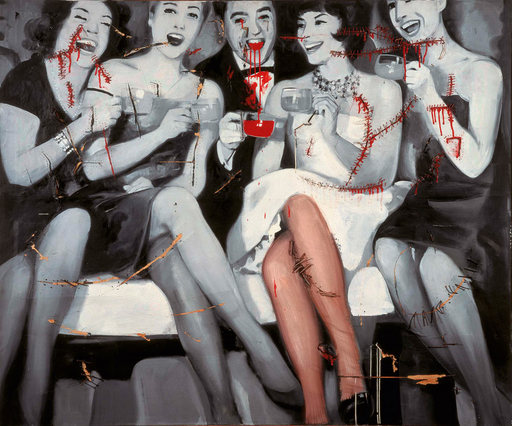
Gerhard Richter. 1963.---Kandinsky, (1912):This doubt, and the still-oppressive suffering caused by a materialistic philosophy create a sharp distinction between our souls and those of the “primitives.” Our souls, when one succeeds in touching them, give out a hollow ring, like a beautiful vase discovered cracked in the depths of the earth. For this reason the movement toward the primitive, which we are experiencing at this moment, can only be, with its present borrowed forms, of short duration. These two similarities between modern art and the forms of bygone periods are, as can easily be seen, diametrically opposed. The first is external and thus has no future. The second is internal and therefore conceals the seeds of the future within itself. After the period of materialistic trials to which the soul had apparently succumbed, yet which it rejected as an evil temptation, the soul emerges, refined by struggle and suffering. Read More:http://www.mariabuszek.com/kcai/Expressionism/Readings/KndnskySpirit.pdf image:http://www.tate.org.uk/tateetc/issue17/poplife1.htm
from Donald Kuspit:Indeed,( Gerhard) Richter is a master strip-miner, as his Abstract Expressionist paintings show in particular: they are all dead surface with no expressive depth — nothing of that unconscious that Pollock spoke of. Richter is a master of the fade-out, but he lacks the imagination to invent a scene on his own. He is a predatory appropriator, destroying what he appropriates in the act of doing so.
Richter is a relentless negator, turning everything, whatever its source — often tacky newspaper photographs as well as high art — into a shadow of itself, sometimes a colorful shadow, but usually a black-and-white or gray one. It is a platitudinous German grayness, but also a sign of creative impotence, not to say esthetic bankruptcy. Richter once said that his “work has more to do with traditional art than with anything else,” but it is clearly not up to the standards of traditional art, nor for that matter of the best photography, traditional or avant-garde. …Read More:http://www.artnet.com/magazine/features/kuspit/kuspit2-21-02.asp

Veronica Brady:As I see it spirituality is not something apart from everyday life. It is an experience that occurs in the midst of, and gives depth and integrity to our lives as people who live in a particular culture, in a particular place and time. As one writer puts it, it holds "on to the 'spark' that glows beneath all deep structures, beneath all social structures and beneath all physical existence, and which catches fire in communication with a divine nucleus of existence." Read More:http://www.ru.org/81brady.html image:http://www.tate.org.uk/servlet/ViewWork?cgroupid=999999961&workid=98382
Richter’s work is a compromise between painting and photography, not as good as the masterpieces that exist in both. In fact, I think his painting is an act of revenge on his betters. These include the 48 famous men he portrayed, working from photographs — they seem to be all writers, intellectuals and scientists (what happened to the painters?; clearly not smart enough, Richter seems to be saying, unwittingly admitting his own lack of creative intelligence, not to say originality [but then originality is banned in postmodernism]) — that depreciate them into stereotypes. Richter finishes them off, depreciating them further: after he’s through with them, they look like hollow blanks rather than bullet minds.
Richter’s portraits are profoundly nihilistic, like all his work, however glamorous its veneer sometimes is, especially in his Abstract Expressionist works, but also in his color portraits and color landscapes, and however quasi-sexual and pseudo-intimate his content, as in his paintings of nudes and infants. Richter is a master at faking it, no doubt because he thinks the world is fake — a visual as well as cognitive construction, in which the possibility of authenticity is ruled out from the beginning. Certainly he shows his own inauthenticity by turning cheap reproductions into expensive paintings — an ironical joke played on art, familiar from Andy Warhol, and as pseudo-avant-garde as Warhol. Richter is a profoundly jaded, tired artist, running on borrowed art and social capital….Read More:http://www.artnet.com/magazine/features/kuspit/kuspit2-21-02.asp
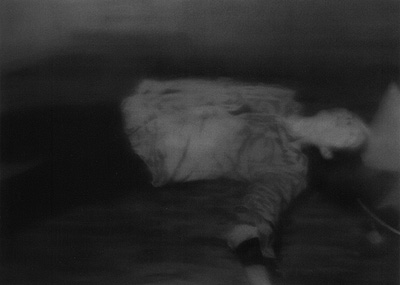
Kandinsky:The artist uses his strength to flatter his lower needs; in an ostensibly artistic form he presents what is impure, draws the weaker elements to him, mixes them with evil, betrays men and helps them to betray themselves, while they convince themselves and others that they are spiritually thirsty, and that from this pure spring they may quench their thirst. Such art does not help the forward movement, but hinders it,
gging back those who are striving to press onward, and spreading pestilence abroad. Such periods, during which art has no noble champion, during which the true spiritual food is wanting, are periods of retrogression in the spiritual world. Read More:http://www.semantikon.com/art/kandinskyspiritualinart.pdf image:http://raisethehammer.org/article/565/possibility_for_a_camera_obscura_and_garth_and_stonechurch
…Interestingly enough, all 48 of Richter’s geniuses are dead. (Does he also mock genius, another concept the postmodernists don’t like?) Richter seems to have a deep appreciation of death — the Germans seem to have had a monopoly on it in the last century, and in general have been known for their romantic conception of it, not to say their fascination, even obsession with it, as though they had exclusive rights to it and understood it better than anyone (which their history suggests they might) — as his series of works dealing with the Baader-Meinhof figures suggests. Apparent suicides, many think they were murdered in prison, and Richter’s gloomy pictures supposedly express sympathy for them. I don’t think so; like all his works, they have a morbid coolness that suggests rigor mortis. He has packed the dead in the dry ice of his art, which does nothing to preserve and immortalize them, but, ironically, hastens their decay — a clever feat of anti-art. All his art is about dead art — the art of the past — which it preys on with necrophiliac glee. Richter de-immortalizes what tradition regards as immortal, showing that tradition is a wasteland of fading memories, which denies its power over the present….

---Kandinsky:At such a time art ministers to lower needs, and is used for material ends. She seeks her substance in hard realities because she knows of nothing nobler. Objects, the reproduction of which is considered her sole aim, remain monotonously the same. The question "what?" disappears from art; only the question "how?" remains. By what method are these material objects to be reproduced? The word becomes a creed. Art has lost her soul. In the search for method the artist goes still further. Art becomes so specialized as to be comprehensible only to artists, and they complain bitterly of public indifference to their work. Read More:http://www.semantikon.com/art/kandinskyspiritualinart.pdf image:http://www.gloobbi.com/art/gerhard-richter-vienna/
…Photo-Realism as well as Abstract Expressionism — indeed, any and every kind of representational and abstract art — seem to belong to the remote artistic past, which is part of the déjà vu mentality of postmodernism, what one might call its post-visionary historicism. In fact, it is subliminally an attempt to discard history without offering any fresh start, for there is none according to postmodernism. For Richter, everyday, easily produced, collective photography has replaced the grand art of the past laboriously made by individuals. While seeming to deplore the loss, he accepts and even celebrates it, making an art that subsumes individuality in collective, commonplace “vision,” which is the opposite of what such artists as Titian did, which is part of the reason we respect them today….Read More:http://www.artnet.com/magazine/features/kuspit/kuspit2-21-02.asp
Richter appreciates the collective better than he appreciates the individual, subsuming his own individuality — it exists in vestigial form, still more potential than actual — in a collective purpose. He does not even strike a balance between individual vision, with its hint of what Miró called the artist’s “inner drama,” and collective vision, which turns appearances into stereotypes. One cannot expect an artist who spent his formative years in East Germany, and thus was conditioned to believe in social obedience and conformity — to submit to social authority — rather than risk independence, creative autonomy and nonconformity, to change his mental habits of accommodation to authoritarian images, including high art images that have become authoritarian through their mass reproduction. He may toy with them, denying their truthfulness, but he submits to them, however archly, and even, in his own weird way, apotheosizes them in the act of debunking — destabilizing — them….
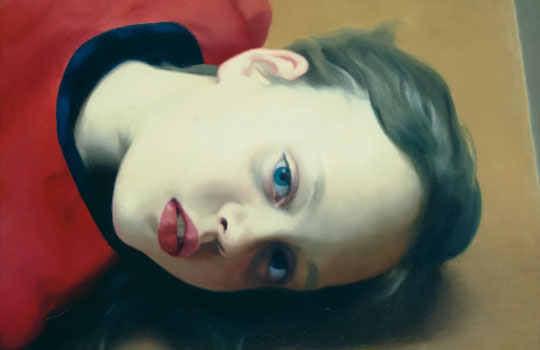
---Kandinsky:Competition arises. The wild battle for success becomes more and more material. Small groups who have fought their way to the top of the chaotic world of art and picture-making entrench themselves in the territory they have won. The public, left far behind, looks on bewildered, loses interest and turns away. But despite all this confusion, this chaos, this wild hunt for notoriety, the spiritual triangle, slowly but surely, with irresistible strength, moves onwards and upwards. The invisible Moses descends from the mountain and sees the dance round the golden calf. But he brings with him fresh stores of wisdom to man.---Read More:http://www.semantikon.com/art/kandinskyspiritualinart.pdf image:http://www.curatedmag.com/news/2009/03/25/gerhard-richter-portraits/
…But no artist — nobody — is a hero to Richter, heroism being as declassé as genius in postmodernism. Certainly Richter is no hero of art, although he might well have become one in East Germany, had it continued to exist and had he continued to live there. The East Germans are supposed to have more credibility and endurance than the West Germans because they suffered under Communist oppression — another version of Nazi oppression for many Germans — while the West Germans prospered under capitalism, growing giddy with wealth. (They forgot that capitalism has its own oppressiveness, which they are now beginning to re-learn, like everybody else in the so-called free West.) The most successful of the postwar German artists were born in East Germany, which instantly privileges them as victims of authoritarianism. They are viewed with awe, as though their experience in the East has made them more authentic than West Germans, and also because they evoke the old Nazi authoritarianism….
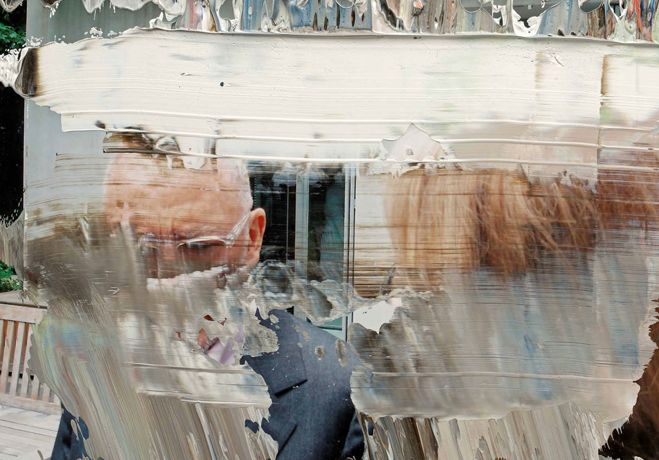
---Read More:http://artobserved.com/2009/08/go-see-madrid-gerhard-richters-overpainted-photographs-at-fundacion-telefonica-through-august-30-2009/
…Richter is clearly among these East German artists, who owe some of their success to the fact that they come from East Germany, whatever the nature of their art. However controversial, they are treated well because they symbolize the guilt the West Germans feel for their economic success, which their brothers in the East did not experience. I want to suggest that the secret of Richter’s art is its playful — which does not necessarily mean ironical — acceptance of Socialist Realism, the official style of the Communist world, which included East Germany.
Richter¹s work takes Socialist Realism as its point of departure and continues to be Socialist Realist in modernist drag. Socialist Realism is people’s art. It uses the styles of the acceptable past, cutting them down to the reproductive terms that are comprehensible to the people. Their vision is cancelled in the name of the Great Cause — the People — and they are banalized into instruments of ideology and propaganda. Richter does the same thing with abstraction and representation. They are reduced to dumb shows of art — a kind of visual mummery — or, to put this another way, a visual sound and fury signifying nothing, whatever its subject matter. They are reduced to people¹s art, simplified and trivialized. All one has to do is to look at his mock Mondrian to get the point. It is people’s abstraction, just as Richter’s Abstract Expressionist paintings are the people¹s platitudinous idea of Abstract Expressionism — a Socialist Realist scam on Abstract Expressionism….
…I am arguing that Richter makes Socialist Realist art while seeming to discredit and mock it. He ends up dragging all art down to its level, which is to make all art Socialist Realist in import. Socialist Realism, rather than the Old Masters, including the Old Modern Masters, is his true artistic heritage. Richter is trying to shed it, live it down in unconscious embarrassment, but he can’t get beyond it.
After the collapse of East Germany and its assimilation by West Germany, a book was published describing the “Taugefuhl” — the very unGerman feeling that all was secretly melting, thawing, absurd, that nothing was solid, real, genuine — that existed in East Germany. In other words, that there was a great, almost incomprehensible split between social appearances and social reality. They just didn’t go together, and seemed to cancel each other, leaving one in a vacuum.
East Germany was thus the ironical social expression of the Marxist idea that “all that is solid melts” in the modern world — that it undoes everything of value in the past and that it itself creates. It is all the more ironical because it expresses the inner truth about life in a regime that claimed to be Marxist, indeed utopian.
Richter finds the same disturbing feeling in the West German utopia — a cornucopia of commodities (Richter¹s sexy nudes and vulnerable infants also have cuddly commodity appeal) — as his Capitalist Realist works show. Only there it is hidden behind a seductive, busy commercial surface rather than lying on the dull, static surface of everyday life — evident in the mass-produced buildings and uniforms of East Germany, which never made a profit on anything, except paranoia (of which there are also traces in Richter’s paintings, haunted as they are by the ghosts of past art).
Capitalism, like the Communist version of Socialism, is also a fascist Potemkin village of self-advertising images — a social facade behind which there is a depressing human void, the emptiness of meaninglessness. This facade of images tells us nothing about social reality, let alone psychological reality. (Richter has no feeling for it, as one might expect from someone so oriented to superficial, external appearances. He makes them more superficial and external — nihilistically strips them of all sense of purpose, every vestige of meaning — without penetrating the inner meaning and purpose they do in fact have.) They are in fact lies, deceptions, leading us into self-deception — part of the Big Lie of modern society and life, and maybe life in general.
It is this feeling of unreality and insubstantiality — this sense of an inner vacuum in reality, which makes it seem unreal — that Richter captures in his paintings. It is the one brilliant, critical thing he does, because it is the one thing that he understands from the inside. His is an art of profound disillusionment, with art as well as society, and perhaps himself, as his feeling that he does not live up to the ideals of traditional art suggests. In other words, he is a humanist manqué — a humanist despite himself, although he seems to have no self, that is, no inner profile. He is a blank, and his blankness infects everything he touches, as though it rather than he was empty.
This is Richter’s tragedy, rather than that of painting, which will survive his supposedly subversive endgame painting. But even his tragedy is fraudulent — as fraudulent as his art — because he does not agonize over the fate of painting. He professes to love it, but reduces it to matter-of-factness, as though that could finally kill it off, which is what he unconsciously wants to do. Nor does his art show any signs of personal agony — it does not seem marked by personal experience — which confirms its low expressive profile, its celebrated coolness, indeed, ice-coldness. It is as cold as death, which does not mean that painting has died, but that Richter was too depressed — how else could one feel growing up in East Germany and knowing there was a better Germany? — to feel fully alive.
Richter lowers our expectations from painting, which is the correct postmodern thing to do — painting has died, and Richter is slyly hammering the nails in its coffin — for in postmodernism, painting is no longer an experience but an idea. (Why hammer so hard? Is he afraid that painting has been buried alive, and has the strength to rise out of the grave that theorists have dug for it? Does he really mourn for painting in the act of painting, or is he digging the grave of his own painting?)
In Richter’s work emptiness has become the ruling idea, which is why his emptiness — his Taugefuhl, dissolving appearances into a blur as though there was no reality behind them, as though they did not point to something that is the case, as though they had no reference but were dispensable, arbitrary signifiers, a social surface with nothing behind it, like everything else — is smug, arrogant and humorless. (The denial of reference — the reduction of art to a language game, a game with visual signifiers that have no significance because they self-referentially signify nothing but themselves and the context of their use — is a defense against reality, a failure of reality-testing. It suggests that Richter’s art, and postmodern art in general, is a form of depression and disillusionment, not only with the world, but with art itself. The tactic of non-referentiality renders both art and the world meaningless, in effect annihilating both, that is, suggesting their nothingness — the abysmal emptiness into which Richter’s images dissolve.) Richter is thus stereotypically German in a way that Kiefer, Baselitz and Polke, whose art is genuinely tragic as well as uncannily comic, have rendered obsolete….Read More:http://www.artnet.com/magazine/features/kuspit/kuspit2-21-02.asp
ADDENDUM:
Brady:Art reminds us that life is stranger, more beautiful, demanding, joyous and painful than common sense knows. The holy then, is mysterious. It underlies the vision of tragedy and, indeed of any good novel which gives us a glimpse into the mysteries of the human condition. Far from being unworldly or abstract, this mystery exists in the midst of our lives as a wonderful passage in Margaret Attwood’s Alias Grace makes clear. Grace comes into the kitchen early in the morning.
There was a strange light, as if there was a film of silver over everything, like frost only smoother like water running thinly down over flat stones; and then my eyes were opened and I knew it was because God had come into the house and this was the silver that covered heaven. God had come in because God is everywhere, you can’t keep him out, he is part of everything there is.
But he is beyond any question or control of ours:
I said, what do you want here? But he did not answer, he just kept on being silver, so I went out to milk the cow, because the only thing to do about God is to go on with what you were doing anyway, since you can’t ever stop him or get any reasons out of him. There is a Do this or Do that with God, but not any because.Read More:http://www.ru.org/81brady.html


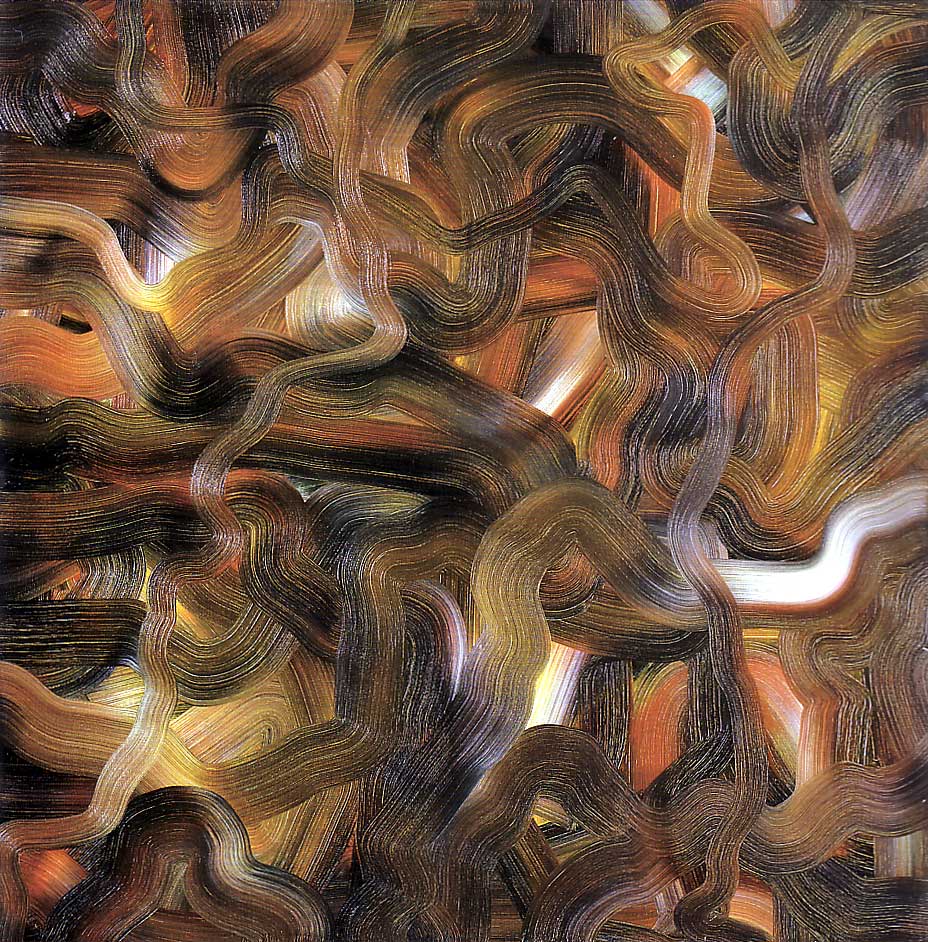


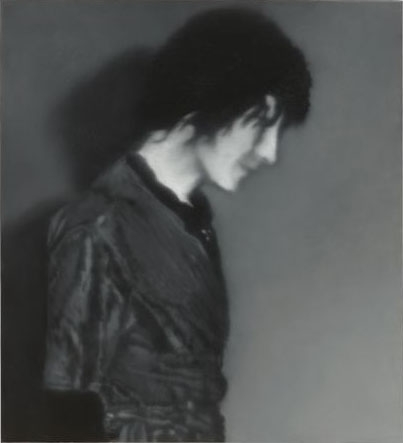




 COMMENTS
COMMENTS



